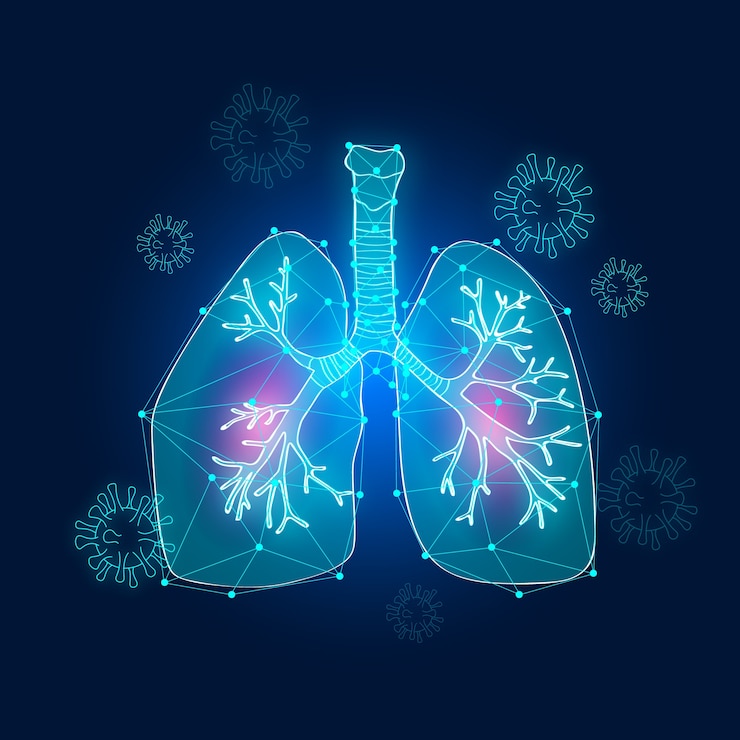Introduction
Asthma is a chronic inflammatory disease in which episodic bronchoconstriction, airway hyperresponsiveness, and reversible airflow limitation are observed. It is a multifactorial disease with both genetic susceptibility and environmental contributors. The disease is spontaneously or treatment reversible in many patients but can result in persistent airway remodeling and irreversible obstruction in some.
Epidemiology
About 300 million people worldwide are estimated to suffer from asthma, with prevalence varying by geographic region and socioeconomic status. In the United States, it affects around 8% of the population, and more children than adults have the condition. Asthma is heavily influenced by socioeconomic disparities and environmental exposures to pollution and allergens.
The estimated prevalence of asthma in adults in India ranges from 2% to 3% and can go up to 10–15% in pediatric population. Urbanization and high indoor biomass fuel use add to the burden of the disease along with increasing levels of pollution. According to studies, metropolitan cities like Delhi, Mumbai, and Kolkata have a higher incidence of asthma due to high exposure to allergens and severe air pollution. Rural populations may have lower exposure rates to industrial emissions but suffer more acute risks from indoor smoke in cooking fuels. Genetic predisposition, dietary behavioral factors, and environmental pollutants like PM2. However, these PM2. 5 and PM10 particulates are some of the primary reasons leading to increased cases of asthma across India.
Pathophysiology
Asthma is mediated mainly by persistent inflammation with multiple types of cells, such as eosinophils, mast cells, T-helper 2 (Th2) lymphocytes, and innate lymphoid cells. The underlying mechanisms are:
- Inflammatory Response
Th2 inflammation – Allergen-exposed dendritic cells stimulate naive CD4+ T cells to differentiate into Th2 cells in atopic asthma. These cells secrete interleukins (IL-4, IL-5, IL-13) that stimulate eosinophilic inflammation, IgE release and mucus production.
Neutrophilic inflammation – In non-allergic asthma includes an IL-17 mediated inflammation through the action of Th17 cells leading to a steroid resistant inflammation with severe forms of the disease.
- AHR (Airway Hyperresponsiveness)
Exaggerated bronchoconstriction in response to stimuli such as allergens, cold air, and exercise is due to increased bronchial smooth muscle sensitivity.
Sensory nerve pathways are upregulated and lead to hyperresponsiveness with increased bronchoconstriction.
- Airway Obstruction
Bronchoconstriction: Histamine, leukotrienes (LTC4, LTD4, LTE4), and prostaglandins (PGD2) are released, acting on smooth muscle cells of airways, resulting in contraction.
Mucosal Edema: Change in blood vessel permeability; swelling of airway wall.
Mucus Hypersecretion: Goblet cell hyperplasia leads to excessive mucus production, causing airway plugging and airflow limitation.
- Airway Remodeling
Subepithelial fibrosis: Thickening of the basement membrane from excessive collagen deposition.
Smooth Muscle Hypertrophy and Hyperplasia: Chronic Inflammation Induces Airway Smooth Muscle Cell Proliferation.
Angiogenesis: Increased vascularization plays a role in airway thickening and chronic obstruction.
Clinical Manifestations
The classic symptoms of asthma includes:
Wheezing: A squeaky, high-pitched whistling sound resulting from disrupted airflow in narrow airways.
Dyspnea (Shortness of Breath): Especially on exertion or nocturnal.
Coughing: Typically worse at night or early morning, and occasional coughing is the only symptom in cough-variant asthma.
Chest Tightness: A feeling of tightness in the chest, which can be distressing to patients.
Symptoms are episodic in nature with asymptomatic periods alternating with episode exacerbation. Triggers include allergens (dust mites, pet dander, pollen), infections, cold air and exercise.
Diagnostic Evaluation
Diagnosis is from clinical history, physical examination and objective tests:
Spirometry: Airflow obstruction (decreased FEV1/FVC ratio) with marked post-bronchodilator reversibility.
Peak Expiratory Flow Rate (PEFR): Monitor variability and therapeutic response.
Bronchoprovocation Testing: Methacholine or histamine challenges are utilized for airway hyperresponsiveness where there is diagnostic uncertainty.
Fractional Exhaled Nitric Oxide: Measure eosinophilic inflammation and screen steroid responsive asthma.
Allergy Testing: Skin prick or specific IgE testing for allergic triggers.
Management
Treatment of asthma is based on a stepped-care approach according to severity and control of symptoms.
- Pharmacologic Therapy
Reliever Medications:
Short-Acting Beta-2 Agonists (SABAs): Albuterol, levalbuterol—acute symptom relief.
Anticholinergics: Ipratropium—acute exacerbations, particularly in combination with SABAs.
Controller Medications:
Inhaled Corticosteroids (ICS): Fluticasone, budesonide—first-line therapy for persistent asthma.
Long-Acting Beta-2 Agonists (LABA): Salmeterol, formoterol — used in combination with ICS to enhance control.
Leukotriene Receptor Antagonists (LTRAs): Montelukast – Useful for allergic asthma and exercise-induced symptoms.
Biologic Therapies: Monoclonal antibodies (omalizumab) target IgE; mepolizumab (anti-IL-5); reslizumab (anti-IL-5), and dupilumab (anti-IL-4/IL-13) in severe asthma.
Oral Corticosteroids: Only for severe exacerbation or uncontrolled asthma.
- Non-Pharmacologic Strategies
Trigger Avoidance: Minimizing exposure to allergens, smoke, and pollutants.
Pulmonary Rehabilitation: Breathing exercises, physical training and education, as appropriate for severe cases.
Vaccination: Influenza and pneumococcal vaccines to prevent infection-related exacerbations.
Diet Changes: Omega-3 fatty acids, vitamin D, and antioxidants may be beneficial in certain cases.
Treatment:
- Oxygen therapy to keep SpO2 > 92%.
- High-dose inhaled SABA ± ipratropium.
- Corticosteroids Systemic (oral or intravenous).
- Supplements of Magnesium sulfate (IV) in severe presents.
Should respiratory failure occur, patients with moderate to severe infections would receive mechanical ventilation.
Outlook and Future Directions
Despite progress in therapy, asthma continues to be one of the major causes of morbidity. Precise treatments aimed at a particular inflammatory pathway also may offer an opportunity to improve management. Research to date has focused on us having our most exciting new phase of asthma care yet, with biologics and gene therapy.
Conclusion
Asthma is a heterogeneous disease, exhibiting diverse phenotypic manifestations. Management necessitates personalized approach combining pharmacologic and non-pharmacologic interventions. Immunotherapy and biologics have markedly changed the therapeutic paradigm in order to control the disease and improve the quality of life.
References
1. Global Initiative for Asthma (GINA). Global Strategy for Asthma Management and Prevention. 2023. Available from: https://ginasthma.org/
2. Boulet LP, Reddel HK, Bateman E, Pedersen S, FitzGerald JM, O’Byrne PM. The Global Initiative for Asthma (GINA): 25 years later. Eur Respir J. 2023;61(2):2300001.
3. Holgate ST. Innate and adaptive immune responses in asthma. Nat Med. 2012;18(5):673–83.
4. Papi A, Brightling C, Pedersen SE, Reddel HK. Asthma. Lancet. 2018;391(10122):783–800.
5. Gupta D, Aggarwal AN, Jindal SK. Epidemiology of asthma in India. Indian J Chest Dis Allied Sci. 2002;44(4):253-64.
6. Murthy KJ, Sastry JG. Economic burden of asthma. Indian J Med Res. 2006;124(6):455-67.
7. Bousquet J, Khaltaev N, Cruz AA, Denburg J, Fokkens WJ, Togias A, et al. Allergic rhinitis and its impact on asthma (ARIA) 2008 update. Allergy. 2008;63(Suppl 86):8-160.
8. Reddel HK, Taylor DR, Bateman ED, Boulet LP, Boushey HA, Busse WW, et al. An Official American Thoracic Society/European Respiratory Society Statement: Asthma Control and Exacerbations. Am J Respir Crit Care Med. 2009;180(1):59-99.
9. Pakhale S, Wooldrage K, Manfreda J, Anthonisen N. Prevalence of asthma symptoms in young adults in Canada. Can Respir J. 2006;13(5):253-8.
10. Peters SP, Ferguson G, Deniz Y, Reisner C. Uncontrolled asthma: a review of the prevalence, disease burden and options for treatment. Respir Med. 2006;100(7):1139-51.
11. Jameson JL, Fauci AS, Kasper DL, Hauser SL, Longo DL, Loscalzo J, editors. Harrison’s Principles of Internal Medicine. 21st ed. New York: McGraw Hill; 2022.






